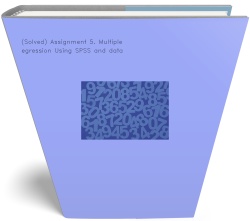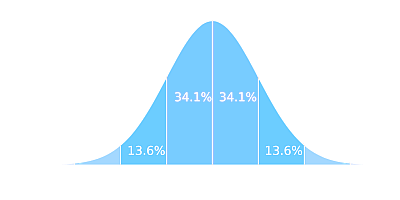Here’s the assignment. We’ve been instructed to define any population parameters in the write-up and include
Here’s the assignment. We’ve been instructed to define any population parameters in the write-up and include relevant plots and tables.
-
Chapter 12, problem 26 (p. 510). This is a randomized block design.
The concentration (in nanograms per millilieter ) of plasma epinephrine were measured for 10 dogs under isofluorane , halothane, and cytopropane anesthesia; the measurements are given in the following table.
Dog Dog Dog Dog Dog Dog Dog Dog Dog Dog
1 2 3 4 5 6 7 8 9 10
Isofluorane .28 .51 1.00 .39 .29 .36 .32 .69 .17 .33
Halothane .30 .39 .63 .68 .38 .21 .88 .39 .51 .32
Cyclopropane 1.07 1.35 .69 .28 1.24 1.53 .49 .56 1.02 .30- Do a parametric analysis using aov(). Be sure to include a histogram of the residuals and comment.
- Perform the three pairwise comparisons using Tukey's procedure.
-
Chapter 12, problem 30 (p. 511). This is a randomized block design.
Ten varieties of linseed were grown on six different plots (See attached data containing the yields in kg per hectare)
Can you conclude that the varieties have different yields? Use Tukeys method to compare the varieties
-
Reanalysis of insecticide data.
See background attachment and insect data attachment
Instead of using the survival time Y ijk (in hours,
divided by 10), use the reciprocal rate R ijk = 1 = Y ijk . Obviously, higher \death
rates" are better.- Obtain an interaction plot; are the mean profiles approximately parallel?
- Fit the model with main effects and interaction; formally test that the interaction is zero at the 10% level.
-
Fit the additive model. Obtain Tukey 95% CI's for comparing the three doses with an overall FER
·
0
:
05.
- Are there significant differences in death rates across doses?
-
Are there significant differences among insecticide types? (iii)Group the insecticides according to the results of the pairwise comparisons. Are there pairs that are not significantly different?
(iv) Which insecticide has the best "death rate?"
-
Check the additive modeling assumptions:
- look at the residuals r ijk versus fitted values E ( R ijk );
- Print histogram of the residuals r ijk and comment
(c) Comment on the spread of the residuals versus both type and dose. The R code for these might look something like:
d=read.table("http://www.biostat.umn.edu/~hanson/FundBiostat/insect.txt",header=F)
dose=factor(d[,1]); type=factor(d[,2]); time=d[,3]; rate=1/time
fit=aov(rate~dose+type+dose*type); summary(fit)
interaction.plot(rate,dose,type)
fit=aov(rate~dose+type); summary(fit)
TukeyHSD(fit)
plot(fit$fit,fit$res)
hist(fit$res)
plot(type,fit$res)
plot(dose,fit$res)
Price: $21.93
Solution: The downloadable solution consists of 15 pages, 693 words and 16 charts.
Deliverable: Word Document
Deliverable: Word Document



![[All Steps] Treatment Placebo 12 8 10 5 6 9 9 4 15 6 12 14 We wish [All Steps] Treatment Placebo 12 8 10](/images/solutions/MC-solution-library-81002.jpg)


![[Solution] Define [Solution] Define](/images/solutions/MC-solution-library-81005.jpg)
